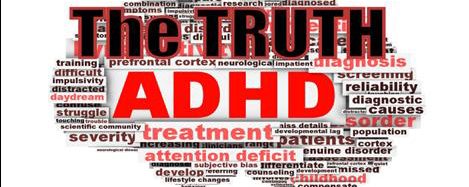After months of research on the causes and affects of ADHD, I had been left with a muddled picture as to how ADHD originates in the brain and how ADHD symptomology can be explained by psychopathologies in the brain. It wasn’t until I happened upon research aimed at studying ADHD and its effects on sleep that I found the most hardy, concise and effectual explanation of ADHD, and how it affects the brain’s of its’ victims.
Along the way, moreover, I was pleasantly surprised to not only find a suitable description of the disorder’s etiology, but also, to learn of more effective and permanent treatments for ADHD.
So let’s jump right in and go over some basic principals that will help me describe, in the simplest terms possible, how ADHD can be interpreted through its’ relation to sleep. (This is the first blog in a series of blogs that will be set out to delve into how sleep modulates ADHD symptomology, and how more efficient treatments for the disorder are being studied en lieu of these new findings regarding sleep and ADHD)
Research aimed at identifying and explaining the correlation between sleep pathologies and ADHD, have been grounded on using the Vigilance Stabilization Model to describe the interrelation between Brain Waves as they affect the onset of ADHD. The vigilance Stabilization model explains ADHD as a pathology induced by unstable vigilance regulation.
At this point, you may be asking what is Vigilance Regulation? To sum it up as lucidly as possible:
- Vigilance regulation is: the way in which healthy individuals change and adapt to their external environment by regulating their alertness and concentration potential depending on the needs induced by situational factors, and an individual’s biochemical needs.
- Vigilance, in these terms is therefore regarded as, how much awareness and focus an individual has at different times of the day, depending on his or her vigilance needs.
- For instance, in a life and death situation, a healthy individual’s vigilance goes up. While in the midst of a relaxed and less concentration-demanding scenario a person’s vigilance may drop to fit there environment’s less demanding need for attention.
There are adaptive vigilance regulation mechanisms and maladaptive vigilance regulation mechanisms:
Adaptive vigilance regulation mechanisms: are those typical of healthy individuals responding to their environment’s demands on attention. For example, at the end of a taxing day, after a person becomes overly tired, their natural tendency would be to retreat to their relaxation quarters and attempt to get ready for sleep. However, should this individual be forced to drive home or elsewhere, at this point in their day, they may try to regulate their vigilance levels by opening the window to stimulate themselves, or turning on the radio, etc. These are adaptive forms of vigilance regulation.
Using this model to explain ADHD, hence becomes refreshingly straightforward. Seen in contrast to healthy individuals, those diagnosed with ADHD use maladaptive vigilance regulation mechanisms, and have unstable vigilance regulation capabilities compared to their non-ADHD counterparts. Where as, healthy adults and children have stable vigilance throughout the day, that is, they “pay attention” to school/work, and are able to maintain attention during task focused activities, ADHD victims do not remain vigilant throughout the day, and often day dream or otherwise internally distract themselves when they “should be” focused on the task at hand. To compensate, for their lack of vigilance, then, ADHD sufferers, tend to exhibit maladaptive vigilance regulation mechanisms, such as compensating for their low vigilance states by stimulating themselves through loco-motor movement and hyperactivity.
To learn more about how the foregoing explanation relates to sleep and ADHD, stay with me, and read on for the next few blogs as it will all come together in the end, and may actually help explain your own, or your child’s ADHD symptomology, and how it may be more effectively treated via Neurofeedback treatments for sleep, as apposed to the temporary symptom-reducing mechanisms which stimulant treatments induce.


Good day very cool site!! Man .. Excellent .. Wonderful .. I’ll bookmark your blog and take the feeds additionally…I am glad to search out so many useful info here in the publish, we want develop more techniques on this regard, thank you for sharing.
WONDERFUL Post.thanks for share..extra wait .. …